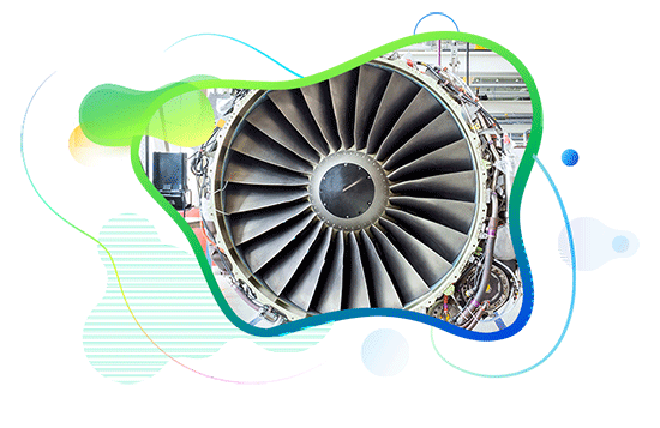

This article was first published in Aviation World.
The aviation/airline industry is well-known for being capital-intensive. The acquisition of aircraft itself is cost-intensive, the fleet requires heavy maintenance, and everything about the airline operations – from fuel to airport parking facilities to passengers to staff – all incur heavy expenditure. Clearly, any minute lost while an aircraft is out for maintenance stops it from being a revenue-generating asset.
How does data science help in aviation?
Aviation players face immense pressure arising from aviation maintenance related to maintaining dispatch reliability, lowering maintenance costs, and enhancing the safety of the craft. MRO alone accounted for 9% of total operational costs for airline operators globally in 2018. Since airlines are constantly plagued with rising costs, bringing down the cost involved in MROs becomes critical.
Adding to this, the issues associated with legacy systems used to operate aircraft systems that do not provide a holistic picture into the health of an aircraft, where data is not updated real-time, and where functions are performed in silos – all this makes for a very challenging scenario even for the most seasoned aviation players.
This is why experts are referring to analytics as the “altimeter” of the aviation industry that can help businesses measure the heights they have soared. Using analytics, they can know exactly what is happening, why it is happening, and what possible impact any event can have on their business.
MRO realities demand a move from descriptive to prescriptive analytics
According to a survey by Oliver Wyman, the global fleet of commercial aircraft could generate 98 million terabytes of data per year by 2026. In-flight recorders, operation systems, and staff all generate a vast amount of data. However, such data is no good if users cannot access it in a timely manner or are unable to use it to derive meaningful insights.
Apart from the data from the Flight Data Recorder, Engine Health Management data or Airplane Health Management data, maintenance-related data of the components/ aircraft recorded in their MRO platforms provides another data stream for predictive maintenance – for instance, non-routines, removals, no fault found and minimum equipment list occurrences, operator maintenance program and part reliability. Analysing both the operational data from the sensors and the MRO data with the right statistical tools will be the key to a high accuracy prediction.
Three types of analytics can help MROs deal with the problem of unpredictability in the area of maintenance and repair of their fleet –
1. Descriptive and diagnostic analytics
Descriptive and diagnostic analytics helps users analyse information based on past events. They answer questions like “What happened?” Alerts, notifications, and standard reports are some key features of descriptive analytics.
2. Predictive analytics
Predictive models/analytics is more sophisticated and lets users know why something happened and what is likely to happen next. Using predictive analytics and modelling, users can study emerging trends to predict where they are headed. The effectiveness of predictive maintenance is in its ability to leverage the historical data alongside the live operational data to make predictions. This is purely aided by the latest developments on the processing of a high volume of dynamic data feeds and analysing with sophisticated statistical tools.
3. Prescriptive analytics
Prescriptive analytics lets users know what will happen in the future as well as the possible impact it could have on the business. It also prescribes the best next actions to take in order to minimize adverse impacts.
The Role of Aviation ERP in Data Analytics
Integrating aviation ERP systems with data analytics tools can significantly enhance operational efficiency. These systems can streamline the data flow between departments, ensuring that maintenance teams have real-time access to crucial information about aircraft status, parts availability, and historical performance metrics. By leveraging this data, MRO teams can make more informed decisions regarding maintenance scheduling and resource allocation.
Furthermore, aviation ERP systems enable better inventory management, ensuring that parts are available when needed without excessive overstock. This capability is crucial in minimizing aircraft downtime and optimizing the supply chain. By effectively utilizing MRO aviation software alongside aviation ERP systems, organizations can enhance their predictive maintenance capabilities, thus reducing the likelihood of unexpected failures and improving overall fleet reliability.
Applications of analytics in the aviation space:
Parts and Components:
Analytics come in handy in predicting possible failures, accelerating the process of uncovering root causes to problems, and speeding up incident response time. All this can help MROs pre-emptively replace components. Of particular interest are parameters like MTBF (mean time between failures) and MTTR (mean time to recovery) when it comes to dealing with aircraft parts.
Technologies cannot be seen in isolation; for instance, while predicting an item’s removal through predictive maintenance, it is also expected that the aircraft maintenance software will also suggest the possible replacement options available to keep the aircraft uptime, as well as the other parts that may also be required during replacement. The confluence of predictive maintenance, AI, and big data drives the holistic business benefits to the organization.
Operations:
Parameters of interest on an operational level include fleet availability, resource utilization, lead times, and so on, which can be used for managing the supply chains efficiently, improving inventory management, customer service, optimizing staff schedules, and assigning resources optimally.
Aircraft:
On the aircraft level, insights into maintenance costs and turnaround time are important in order to increase aircraft uptime and ensure safer flight operations.
What are the benefits of big data analytics in aviation industry?
- Analytics can help aviation players save significantly on costs by allowing them to address failure mechanisms proactively.
- With the right information, MROs can minimize the risks associated with overstocking or stock outs by planning their inventory wisely.
- With reduced AOG (aircraft on ground) events, the airworthiness of the aircraft increases.
- Analytics makes it possible to enhance fleet reliability, ultimately trickling down into reduced delays and cancellations for passengers.
- It ensures higher safety for passengers by reducing the risk of safety incidents.
- Analytics helps businesses achieve true collaboration by bringing together different stakeholders onto a single platform allowing them to “talk” to each other in real-time.
- Analytics is instrumental in ensuring greater airworthiness.
Also Read: Integrating Big Data In Aviation Industry
Historically, MRO hasn’t seen much in the way of IT investments. Dependence on paper or excel sheets is the norm, more often than not and this severely limits the way in which MROs operate, despite having a massive amount of data at their disposal. Of the top three areas for savings for airlines, two falls under the ambit of MROs – one, predictive maintenance which is driven by improved dispatch reliability, and two, delay reduction through an improved turnaround process.
Advances in technology like AI, digital twins, and advanced analytics can together help aviation players gauge the levels of the heights they are soaring – and enable them to achieve still greater heights.
This involves bringing together ERP systems, workforce management systems, analytics, and dashboards to extract sophisticated intelligence from different data sources, ultimately paving the way for better and proactive decision-making. This is especially useful for MROs in helping them ensure optimum management of their resources.
You May be Interested In: Are you forcing Manufacturing ERP to work for Aviation?
Analytics is sure to lead the way to safer and smarter operations in the aviation space and make maintenance, repair, and overhaul a more efficient affair. All this ultimately will create a significant competitive advantage for those who embrace analytics at the core of their aviation operations and create better leverage for them in the market.
Frequently Asked Questions (FAQs)
Enterprise asset management (EAM) involves the management of mission critical assets of an organization throughout each asset's lifecycle. EAM is used to plan, optimize, execute, and track the needed maintenance activities with the associated priorities, skills, materials, tools, and information. The aim is to optimize the quality and utilization of assets throughout their lifecycle, increase productive uptime and reduce operational costs.
Enterprise asset management (EAM) involves the management of the maintenance of physical assets of an organization throughout each asset's lifecycle. EAM is used to plan, optimize, execute, and track the needed maintenance activities with the associated priorities, skills, materials, tools, and information.
The software helps in effective maintenance of assets through preventive, predictive, shutdown and breakdown maintenance strategies. The system also helps enterprises mitigate equipment risks by enhanced safety standards. The streamlined operations and improved asset performance helps organizations increase their investment effectiveness.
EAM is important because it helps organizations track, assess, manage and optimize asset quality and reliability. Asset intensive Organizations have hundreds, thousands, even millions of assets which needs to be maintained to maximize / optimize life of these assets to increase the return on investment.
The key features of effective EAM are:
- Work management.
- Maintenance Strategies (Preventive/ Predictive / Breakdown / Shutdown).
- Planning and scheduling.
- Supply chain management.
- Health and safety.
- Mobility.
- Analytics.
- Improved Asset Health at reduced cost through data driven maintenance Programs
- Complete visibilityon entire maintenance data across Equipment, across Models, across Branches to aid in analysis & decision making such as to Repair or Replace the Equipment
- Insightful analysis of Inspection Data to improve customer satisfaction
- Effective maintenance management enhanced by predictive maintenance and inbuilt analytics
- Increased reliability and safety, keeps complete track of all the inspections & calibration schedules
- Mobile Application enables users to execute work while “in the field” leading to minimized non-productive time and increased productivity and reduces duplication of work and human errors in recording information.
- Quick turnaround time through Actionable Notification & Alerts for every process in real time and accessible anytime and anywhere.
- Improved Regulatory Part of asset management involves the implementation of better O&M practices, which can significantly improve compliance.
Asset Intensive companies under the following Industries :
- Ports
- Cement and Mining
- Utilities
- Fleet Maintenance
- Equipment Rental
- Other Manufacturing
- Real Estate & Infrastructure
- Power Generation
Contact us for a meeting and schedule a demo
This differs on case to case basis, based on the type of installation and unique industry specific requirements. Contact us for a meeting and schedule a demo.
This differs on case to case basis, based on the type of installation and unique industry specific requirements. Contact us for a meeting and schedule a demo.
Stay Connected, follow us on LinkedIn / Twitter to know more about EAM Software latest trends.


